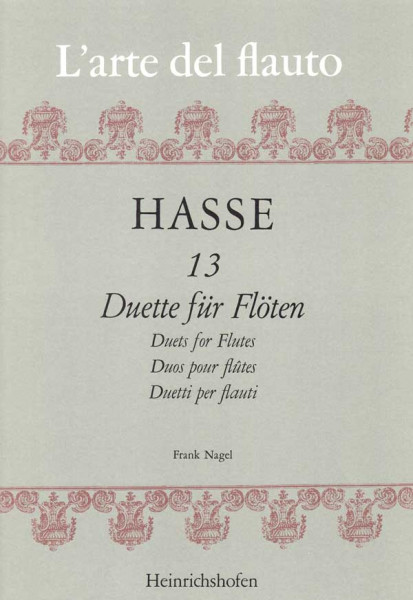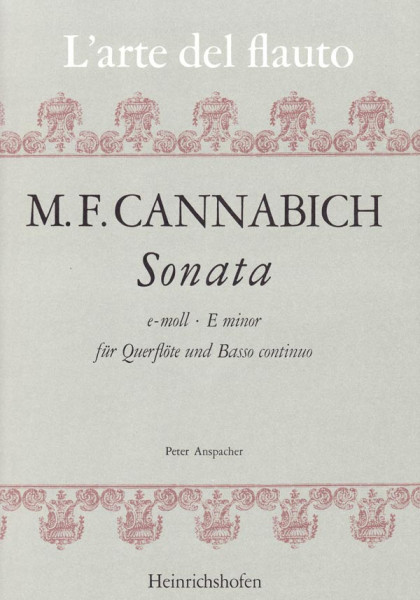No results were found for the filter!
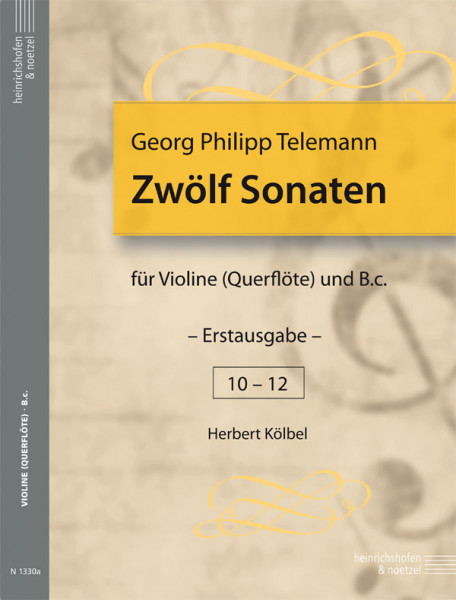
Georg Philipp Telemann
Twelve Sonatas | sonatas 10 - 12 | volume 4 Violin (flute) and Basso continuo
First edition This edition is based on a manuscript from the Staatsbibliothek Berlin, Preußischer Kulturbesitz, Musikabteilung. It comes from the estate of Telemann, who gave it to his grandson Georg Michael Telemann (1748-1831). G. Poelchau acquired the manuscript in 1834 with a pack of music stored in a church tower in Riga. From Poelchau's estate († 1836) the sonata work came to the Royal Library in Berlin. The sonatas are dedicated to the brothers Rudolf, Hieronymus and Johannes Wilhelm Burmester of a Hamburg patrician family dated 1 March 1734, with the note that they follow the ‘12 methodical sonatas’, which were also dedicated to the first two brothers. The close connection between the two large sonata works can be found in their valuable musical content, in the sequence of movements (slow, fast, slow, fast), and in the succession of keys (C-a-D-h-E-F-d-G-e-A-f sharp-g). The bass lines are often involved in the theme. Occasionally we are reminded of J.S. Bach's inventions. In the title, the violin is named as the solo instrument before the flute, as several sonatas are unmistakably written “violinistically” without this hindering their playability for flute. The present edition adheres strictly to the manuscript. Suggestions for dynamics are indicated as such by brackets, as are those for articulation (by dotted lines), which may differ for violinists from those intended for flute. Experienced players should use the original figured bass for their own interpretation. The 12 sonatas made available to the public here for the first time are among the best compositions of this kind by Telemann, who dedicated them to 'connoisseurs and lovers' with the wish '...faire une bonne partie de Vos amusements'. The sonatas will fulfill this purpose today just as they did at that time. Content: X. - Soave - Dolce - Spirituoso XI. - Dolente - Vivace - Piacevole XII. - Teneramente - Spirituoso - Gratioso
Mehr €27.50 *
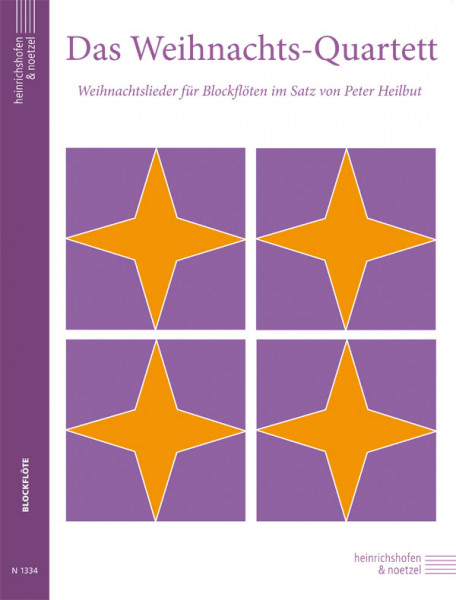
Peter Heilbut
The Christmas quartet 4 recorders (SATB)
Christmas songs for recorders: Contents: 1. Es kommt ein Schiff geladen 2. Maria durch ein Dornwald ging 3. O Heiland, reiß die Himmel auf 4. Vom Himmel hoch da komm ich her 6. O laufet, ihr Hirten 7. Vom Himmel hoch ihr Englein kommt 8. Es ist ein Ros' entsprungen 9. Weihnachtsmusik 10. O Jesulein zart 11. Lasst uns das Kindlein wiegen 12. Joseph, lieber Joseph mein 13. Puer nobis nascitur 14. Ich steh' an deiner Krippe hier 15. In dulci jubilo
Mehr €9.90 *

Ulrika Emden
The Christmas flute 1-2 soprano recorder
Content: Alle Jahre wieder Es ist ein Ros entsprungen Es kommt ein Schiff geladen Ihr Kinderlein kommet Joseph, lieber Joseph mein Kommet, ihr Hirten Lasst uns froh und munter sein Leise rieselt der Schnee Macht hoch die Tür O du fröhliche O laufet, ihr Hirten O Tannenbaum Stille Nacht, heilige Nacht Susani Vom Himmel hoch, da komm ich her
Mehr €9.00 *
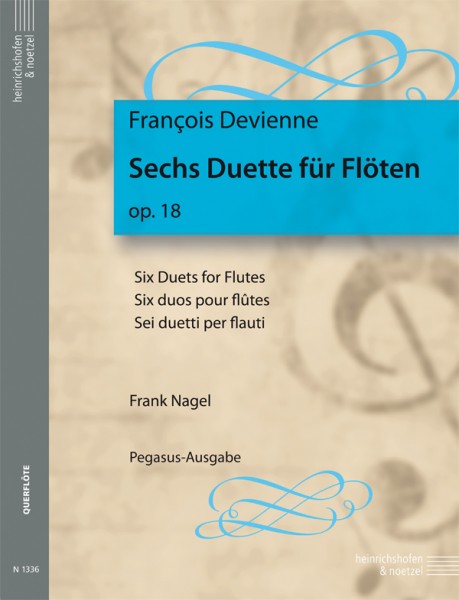
François Devienne
Six duets 2 flutes
Content: I. Op. 18 Nr. 1 - Allegro - Rondo / Allegretto - Mineur II. Op. 18 Nr. 2 - Allegro - Minuetto I - Minuetto II - Minuetto I III. Op. 18 Nr. 3 - Adagio - Allegro IV. Op. 18 Nr. 4 - Allegro - Minuetto I - Minuetto II V. Op. 18 Nr. 5 - Allegro - Grazioso con Variatione VI. Op. 18 Nr. 6 - Allegro - Rondo / Allegretto
Mehr €13.50 *

Johann Joachim Quantz
Six duets op. 5 | volume 1 2 flutes
Johann Joachim Quantz (1697-1773) was a German composer and flautist. Orphaned at an early age, he was apprenticed to a related town musician in Merseburg. He then studied counterpoint with Zelenka and Fuchs in Vienna in 1717. He joined the Royal Polish Chapel in Dresden and Warsaw in 1718, first as an oboist and then as a flautist. From 1724-1727, he travelled to Italy, Paris and London on an electoral scholarship. Returning to his old position in Dresden, he played for Crown Prince Frederick of Prussia in 1728, who chose him as his teacher and appointed him as his musical confidant in Berlin after his accession to the throne in 1741. Quantz wrote the first German flute school ‘Versuch einer Anweisung die Flöte traversiere zu spielen’, which was authoritative until the 19th century and is particularly valuable to us today as a source for the performance practice of early music. Among other things, he composed flute concertos, chamber music with flute, solo and trio sonatas for flute and basso continuo, flute duets and trios.
Mehr €9.90 *
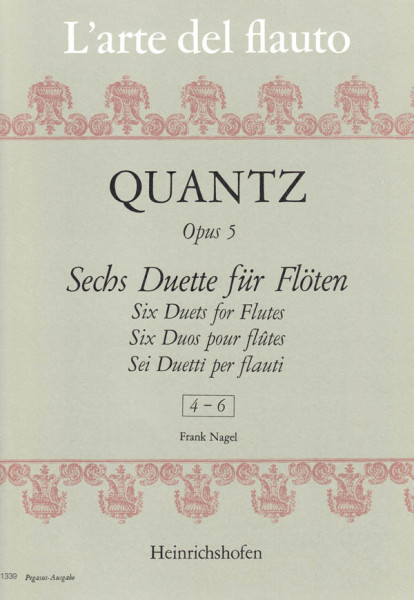
Johann Joachim Quantz
Six duets op. 5 | volume 2 2 flutes
Johann Joachim Quantz (1697-1773) was a German composer and flautist. Orphaned at an early age, he was apprenticed to a related town musician in Merseburg. He then studied counterpoint with Zelenka and Fuchs in Vienna in 1717. He joined the Royal Polish Chapel in Dresden and Warsaw in 1718, first as an oboist and then as a flautist. From 1724-1727, he travelled to Italy, Paris and London on an electoral scholarship. Returning to his old position in Dresden, he played for Crown Prince Frederick of Prussia in 1728, who chose him as his teacher and appointed him as his musical confidant in Berlin after his accession to the throne in 1741. Quantz wrote the first German flute school ‘Versuch einer Anweisung die Flöte traversiere zu spielen’, which was authoritative until the 19th century and is particularly valuable to us today as a source for the performance practice of early music. Among other things, he composed flute concertos, chamber music with flute, solo and trio sonatas for flute and basso continuo, flute duets and trios.
Mehr €9.00 *
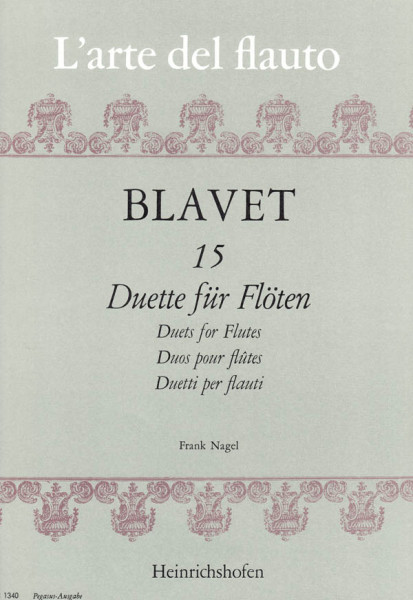
Michel Blavet
15 duets 2 flutes
Michel Blavet (1700-1768) was a French composer and flute virtuoso. He was a remarkable artist who not only specialised in the bassoon and flute, but was also known for his exceptional intonation, even in difficult keys. Voltaire admired the beautiful sound of his playing and Marpurg described him as a virtuoso of the highest quality who maintained modesty despite his great popularity. He was characterised by the fact that he held the flute with his left hand, which set him apart from most flutists of his time. His works, written mainly for the transverse flute, show both the 'Italian and French styles' and are written in simple keys to make them accessible to amateurs. His surviving works include a concerto and 3 sonata books (1740).
Mehr €12.80 *
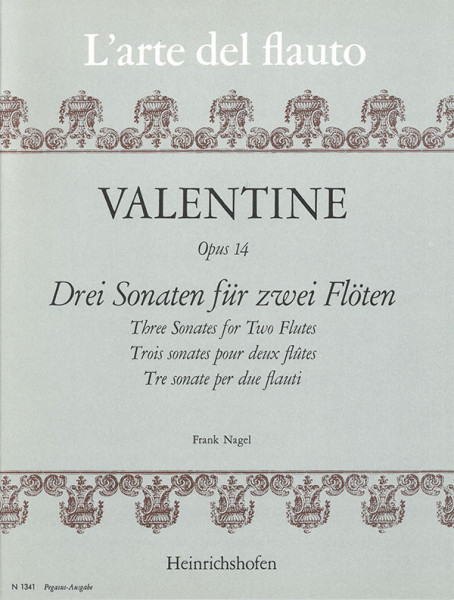
Robert Valentine
3 sonatas op.14 2 flutes
Robert Valentin (ca. 1678 - 1747), also known as Roberto Valentini or Roberto Valentino, was a well-known English composer, recorder player, oboist and violinist. He moved to Rome and became an Italian citizen. Valentino is best known for his numerous recorder compositions. He was considered a highly skilled player of this instrument. His instrumental compositions include a series of sonata collections and trio sonatas as well as concerto grosso. At first, his style was strongly orientated towards that of Arcangelo Corelli. Over time, however, he increasingly turned towards the galant style, which is reflected in his later sonatas published in Northern Europe. Content: I. Sonata - Andante - Allegro - Largo - Allegro II. Sonata - Largo - Allegro - Adagio - Allegro III. Sonata - Largo - Allegro - Andante - Minuet
Mehr €11.90 *

Antonio Veracini
Sonata a- minor Violin, violincello and hapsichord
The Florentine violinist Antonio Veracini was born in 1659 and died in his home town in 1733. His father Francesco da Niccolò Veracini (1638-1720) was a violinist. He probably received his first lessons in violin playing and composition from him. Antonio's employment by the Grand Duchess Vittoria delle Rovere was probably due to his father's good personal relationships at the Tuscan court. He dedicated his first major work to her, the sonatas op. 1 for 2 violins with basso continuo. Apart from these trio sonatas published in 1692, the violin sonatas (Sonate da Chiesa) op. 2 and violin sonatas (Sonata da Camera) op. 3 are known from his printed compositions. Unfortunately, the music for some of the oratorios documented by the libretti that have been found seems to have been lost. Rogers used the undated reprint published by F. Rosati in Modena and the first edition of 1696 dedicated to ‘Serenissimo Principe Gio Gastone di Toscana’ as a model for this edition of the fourth chamber sonata. The model was tacitly corrected. Additions for practical use have been indicated in the score by bracketing, dashes or small print. Content: - Grave - Largo - Vivace
Mehr €13.00 *
Viewed

